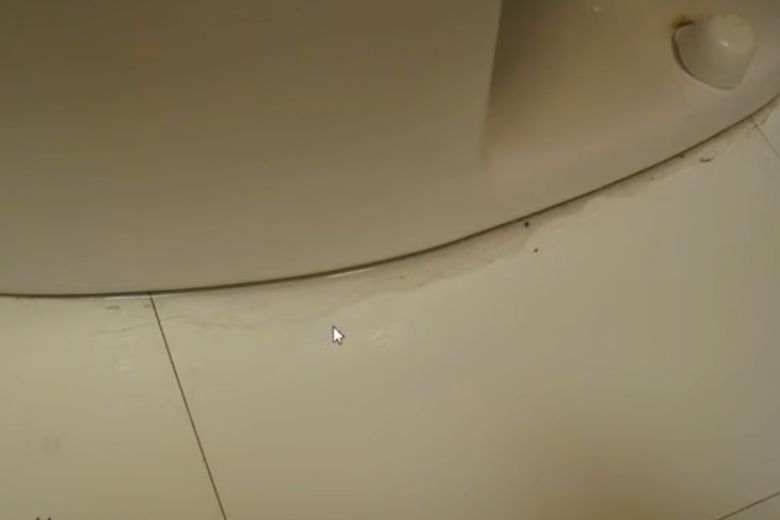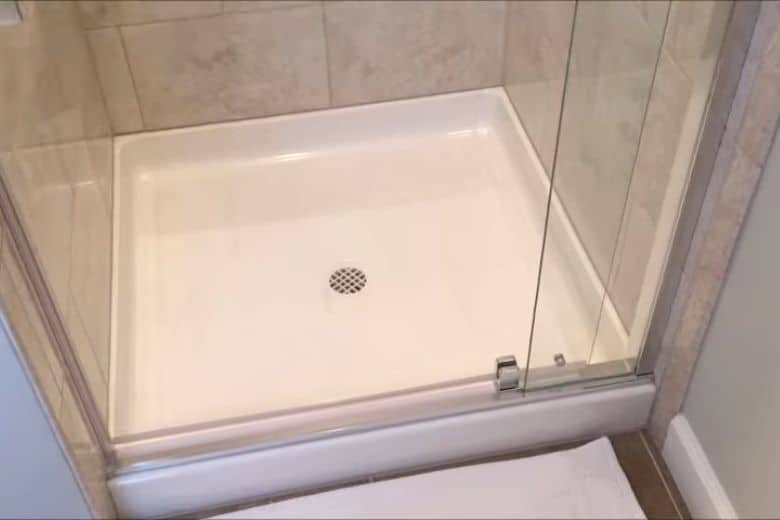You enter the bathroom and hear a dripping water sound coming somewhere from the bathroom. It can be panicking. Mostly, you will hear the dripping water sound coming from underneath the sink. It happens because the bathroom faucet is leaking under the sink. If there’s any, it can quickly ruin the floor under the sink and cabinet set up.
So, why is the bathroom faucet leaking under sink? Bathroom sink leaks at base for four main reasons. It includes a damaged drain body and a leaky P-trap. Other reasons are improper installation of the tailpiece and damage around the flange.
As you see, there can be one or multiple reasons for a leaky bathroom faucet underneath the sink. So, you must start by observing the cause of a leaky faucet underneath the bathroom sink. As you find the real reason for a leaky bathroom faucet, you can follow our guidelines to fix it.
So, don’t skip the fixation article if you don’t want to spend on a plumber.
Why Is Bathroom Faucet Leaking Under Sink?
Usually, you see a leaky faucet because of a damaged cartridge, broken or damaged washer and stem, deteriorating valve seat, and malfunctioning or damaged O-ring of the faucet. However, when you see these problems, the bathroom sink faucet fails to turn off properly.
But the case is different when you see the bathroom faucet leaking at base. It doesn’t happen because of a damaged O-ring or washer. Instead, you can perceive a problem in the faucet setup underneath the sink. Its main reasons include:
- Mostly, the leaks happen close to the drain body under the sink. It happens if the screw that connects the sink and draining pipe becomes loose. Also, the washer can wear out to cause a leak.
- The p-trap holds a little water to stop the odor from the sewage line. However, the P-trap may become ineffective and cause leaks. It can be due to residues around the P-trap, loose slip nuts, and a damaged washer.
- The tailpiece is an L-shaped pipe that connects the main water supply line with the sink faucet. It has a brass or waterproof construction to stop water leakage. Sadly, it loses its waterproofing capacity due to overuse.
- Finally, the bathroom sink faucet’s flange can be the problem. You need to fix the washer or the putty of the flange to stop the water leakage.
Unless you look underneath the sink, you will hardly know where the problem has occurred. So, you should always start by inspecting the problem under the sink.
What to Do When You See Bathroom Faucet Leaking Under Sink
Once the bathroom faucet starts leaking under the sink, you must deal with it ASAP. Otherwise, the leak may cause the bathroom floor to flood with dripping water. It also causes massive water loss, the last thing you want as a homeowner.
Check Underneath The Bathroom Sink Faucet:
The solution to any problem starts by observing the root of the problem itself. It is similar to a leaky bathroom faucet underneath the sink. So, you must reach under the bathroom sink to see what has happened there.
There can often be dirt, dust, and water on the bathroom floor under the sink faucet. So, place an old rag there and kneel on it to inspect the parts of the faucet. If there’s anything you have stored under the sink, you also need to remove them.
You should then look at the bathroom faucet’s tailpiece, P-trap, sink flange, and drain body. It will help you locate exactly where the leak has taken place. Once you detect the location of a leaky faucet under the bathroom faucet, you can fix it.
Arrange The Tools You Need To Stop Leaks Under The Sink Faucet:
A leaky bathroom sink faucet is an awful experience. Once the problem starts occurring, you must fix the leaks ASAP. And to stop the leaks under the sink faucet, you will need multiple tools. So, before proceeding to fix the leaks, arrange the following tools:
- Adjustable wrench
- Slip-joint pliers
- A bucket and old rag
- Long-nose pliers
- Plumber’s putty
- Teflon tape
- Any parts you might need to replace
Tips for Fixing Bathroom Faucet Leaking At Base
We hope you have now understood the reasons for the leaky faucet at the sink base. So, it’s time we see the different fixing ideas for the four causes of the leaks. However, you must turn off the valve of the main water supply line to stop flooding the floor. Also, place a bucket under the sink to collect water in the line.
Tip 1: A Leaky Bathroom Sink Faucet Base Around The Drain Body
The drain body of a sink faucet connects the draining line and the sink. If the slip nut or washer of the drain body wears out, you have to replace it.
- Mostly the retaining nut becomes loose, causing the bathroom faucet to leak from underneath the sink. So, use an adjustable wrench to tighten the retaining nut quickly. You can also wrap it with threaded tape.
- If the sink continues leaking, the problem is with the washer. To fix it, remove the faucet’s retaining nut.
- After that, remove the pivot rod. It will be inside the drain body.
- Removing the pivot rod will give you access to the washer. So, look at the washer and replace it if need be.
- Sometimes the parts of the drain body may have worn out badly. In this case, you must disassemble and replace the parts with newer ones.
Tip 2: Leaks Around The Tailpiece
The tailpiece of the sink faucet connects the sink with the draining pipe. The tailpiece consists of a washer and slips nut. Sometimes the washer or slip nut wears out, causing the leaks.
- Use the adjustable wrench to unscrew the slip nut and tailpiece. You should unscrew the brass-made slip nut with your hands to stop damaging it. If you find it difficult to grip the tailpiece, wrap it with a rubber band for proper gripping.
- If the tailpiece is too old and worn out, replace it with a new one.
- Sometimes the washer of the tailpiece can wear out too. So, you should also replace it when you disassemble the tailpiece setup of the bathroom sink faucet.
- When you install a new tailpiece, you must wrap it with Teflon tape. It will stop future water leakage underneath the sink faucet. Also, try replacing the slip nut to see if it works.
Tip 3: A Cracked P-Trap Is Responsible For The Leaks
The p-trap works as a stopping point to keep away the gas and odor from the sewage line. If it gets damaged, the faucet will also leak and cause the entrance odor inside the bathroom.
- You should start by turning a quarter-turn for all the locknuts and slip nuts. Now, dry off around the drain pipe and p-trap with a rag.
- After that, run the bathroom sink basin full to see where the leak is. So, look closely where the water drips.
- You must replace the washer once you see water leakage around the slip nuts. You must remove the trap band and arm to replace the old washer.
- Also, look at the p-trap band and arm to see their condition. You may need to replace them if required.
Tip 4: Bathroom Faucet Leaking From Underneath At The Sink Flange
The sink flange has putty and washer around and inside it. As the putty and washer crack and wear out, you must replace them. For this, you should start by removing the p-trap band and drain body, following our guidelines in ‘step 2 and step 3’.
Locate the flange lip and apply the plumber’s putty on it. If there’s any excess putty, you should wipe it. Then, check the washer to see if it requires replacement. Finally, you can fix the drain body, tailpiece, and P-trap.
Frequently Asked Questions:
How do I stop my bathroom faucet from leaking?
Answer: You must clean the cartridge, replace the worn-out washer or fix the tailpiece to stop the bathroom faucet from leaking. At times, the loose handle may cause a leak. So, you must tighten it.
What is the valve under the sink called?
Answer: The valve under the sink is usually referred to as a stop valve. People also call it fixture shutoff valves. It has 9 types of variations to choose from for different sink designs.
Do all sinks have shutoff valves?
Answer: Not every sink has a proper shutoff valve. If you see the absence of the shutoff valves, you should install them to control the hot and cold water supply.
What is a valve on a bathroom faucet?
Answer: The valve of the bathroom faucet will control its water flow. You can turn it on or off to help water flow through it when you use the faucet and sink.
What are the parts of a bathroom faucet called?
Answer: There’re many parts of a bathroom faucet. It includes the stem, O-ring, tailpiece, P-trap, drain body, etc. You will see these components inside the valve; some are under the sink.
Conclusion
A bathroom faucet leaking under sink is a warning sign. It alerts you that something under the sink faucet is cracked and needs repairing. Henceforth, you must look at the tailpiece, P-trap, drain body, and slip nuts to identify the root of the leak. Once you have determined the problem, follow our tips to solve the leaky bathroom kitchen sink faucet underneath.
Paul Newman is a blogger who writes about plumbing and home improvement. Over the past 20 years, I have worked as a plumber. My passion is to share my knowledge and experience with others to improve their homes.




